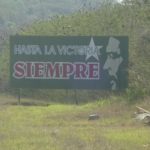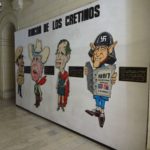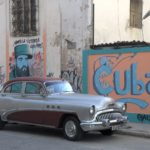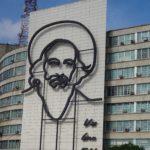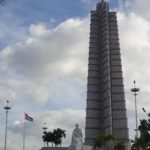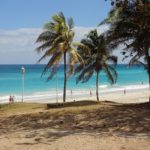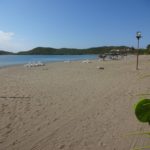Cuba – In Search of a New Story
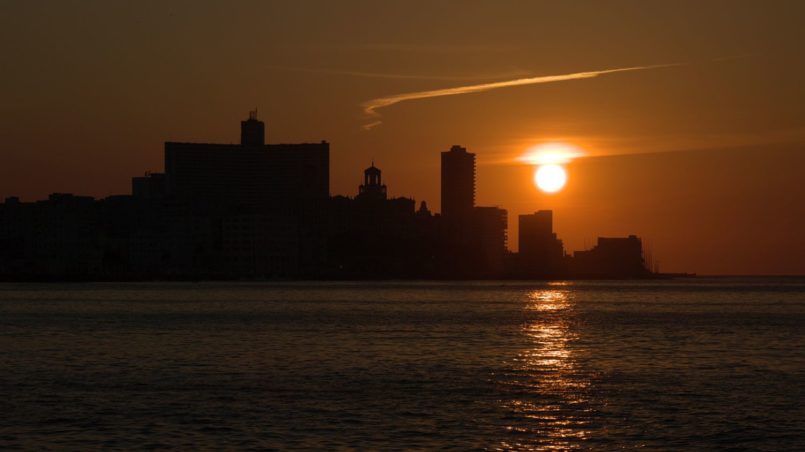
Viva la revolucion! Patria o muerte! These battlecries from the end of the ’50s resound on the walls of houses and posters; in the Museum of the Revolution in the former presidential palace you can see bullet holes and military equipment from that time. Just like these warnings from the old days, the battlecries from this time no longer appear to be so popular. Hardly surprising: the proclaimed eternal revolution is difficult to keep up.
The country, the people are welded together: as a result of the long blockade of the USA, the related hardships and the constant danger of an invasion by the superior neighbours whose secret services, above all in the 60s, executed numerous attacks and coup campaigns in Cuba. This is also the reason for the great patriotism of the Cubans.
All too often the resulting shortages lead to (desired by the blockading countries) insurrection and political changes. Thanks to the support of the Soviet Union – and after its fall – the close cooperation with Latin American states (above all, Venezuela), Cuba has been able to meet these huge challenges quite well.
Nevertheless: the easing of tension with the USA, which began with Obama – to the extent that it will be continued (which under the new administration is anything other than certain) – makes the heroes of the past slowly fade in their significance. As one of the last, Fidel Castro died a few years ago and his brother Raúl, who currently leads the affairs of state, is not the youngest. Cuba will need a new story for its identity. Whether this will take place in the course of an easing of tensions with the west only the future will tell. The youth will not content themselves for long with the old stories from the past.
Time in abundance
You walk past a block of houses which are undergoing works. Two Cuban construction workers talk to each other enthusiastically. Fifteen minutes later you pass the building again and the two of them are still standing there. You stand at the counter of a fast food bar; minutes pass until the bored employee takes your order; instead lists are written.
In every restaurant there is an abundance of personnel, in museums there is an attendant in every room. The technical equipment is in general lacking and also not necessary as enough human workers are available. Regardless of whether you want to book a room or a transfer, whether you want to hire a car: everything is very time-consuming and connected to a great amount of paperwork – even when the paper is – as happened at customs – only collected but not checked. Filing is ultimately also a job.
In principle there is nothing to be said against idleness if it does not lead to a country and its society coming to a standstill in terms of its development. Bluntly put, if you spend your day staring into space, then this is not particulary conducive to one’s personal development.
In slowly increasing numbers of private companies (above all in tourism) things seem to be running a little better. Even if they are subject to high taxes (private profits, to a significant extent, have to benefit the community – a correct approach which has become completely forgotten in the west), it appears that the incentive to organise oneself has grown.
“Apartheid” in Cuba
In Cuba there are two currencies: one for Cubans (the CUP) and another (much more expensive) for tourists (the CUC). Stiff penalties are imposed on foreigners who export CUP or who pay with CUP. Foreigners are not allowed to be transported in some buses and taxis – if they do so, stiff fines follow. There are also some shops (normally those with long queues) which are reserved for the island inhabitants.
The two-currency system takes some getting used to: while tourists from the most developed/richer countries pay, the locals are guaranteed a tolerable level of living support. A clever path for an emerging nation. Nevertheless this system also has a dark side: many Cubans – above all in the tourist centres – consider foreigners to be walking cash machines.
All in all Cuba is definitely worth a visit. On the one hand, because of its landscape and its sights and, on the other hand, as a “trip through time” into the world of Real Socialism. A good command of Spanish is recommended as almost all the information in museums and sights is exclusively in Spanish and only a few Cubans speak English.
Translation into English: Donna Stockenhuber

